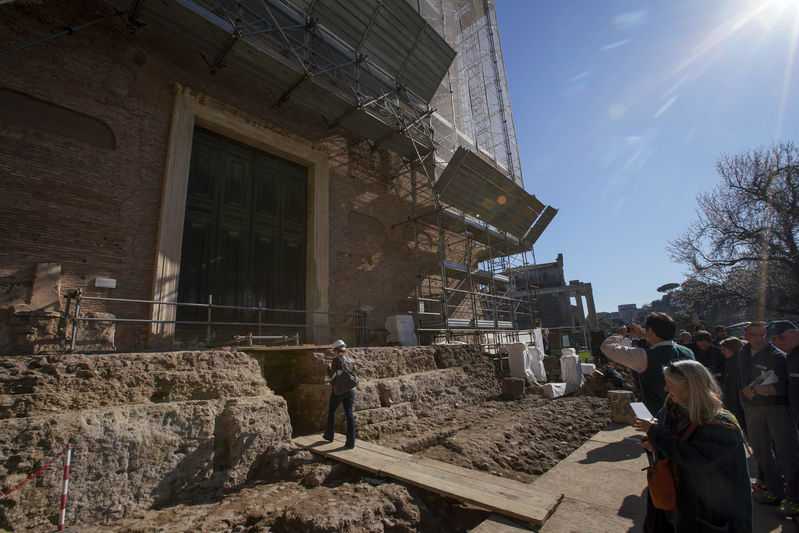Roman Forum find could be shrine to Romulus
23 February, 2020

Italian archaeologists unveiled to the press Friday a thrilling new find from the Roman Forum, that they say may be the lost shrine dedicated some 2,600 years ago to Romulus, Rome’s legendary founder and first king.
Visually, the discovery first announced Tuesday isn't very remarkable: Peering down within an excavated space under the Curia Julia, or ancient senate house, one sees something resembling a washtub that archaeologists say is a sarcophagus, or stone coffin. There’s also a cylindrical stone block, a chunky stub of what may have been an altar.
Both items are constructed of tuff, carved from the Capitoline Hill that overlooks the Forum, and which houses today’s City Hall.
The recently excavated area “represents a location, which in history and in the Roman imagination, speaks about the cult of Romulus,” said archaeologist Patrizia Fortini.
Fortini says no one’s hypothesizing the sarcophagus actually ever contained the bones of Romulus who, with his twin Remus, established the city near the Tiber River around 753 B.C. and founded the kingdom of Rome. It likely dates to the 6th Century B.C., about 200 years after Romulus’ time.
“We don’t know whether Romulus physically existed” the way he was described in legends, Fortini said.
However, many ancient sources claimed that Romulus was buried in the region of the find, and the sarcophagus could have served as a memorial.
Alfonsina Russo, the archaeologist in charge of the website, noted that according to some ancient traditions Romulus was killed and chopped to pieces, or ascended into heaven.
“Therefore, this cannot be his tomb, nonetheless it is quite likely, we believe, that this is a memorial site, a cenotaph,” Russo added.
While excavations continue, authorities hope the public should be able to stroll underground to see the find in about two years.
Legends hold that Romulus and Remus were suckled by a she-wolf as babies, but later Romulus killed his twin brother in a dispute.
Curiously, it’s the second time the sarcophagus and cylindrical stone stub have been unearthed, but it’s only given that archaeologists are attributing an exciting significance to them.
In 1899, an Italian archaeologist, Giacomo Boni, was the first to systematically excavate the region. He described in his writings finding “a rectangular, tub-shaped crate in tuff” and the cylindrical stone, which he likened to a tree trunk. The open-topped “crate” contained what apparently were assorted items - fragments of pottery, pebbles, sea shells and a piece of reddish plaster.
Source: the-japan-news.com
TAG(s):
